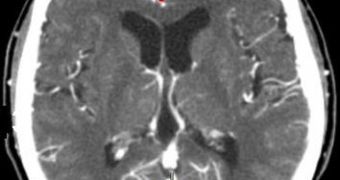A new type of medical implants could one day restore normal limb functions to the paralyzed or, at the very least, it could help them use robotic prosthetic limbs. Behind this new signal transmission technique is physiologist Chet Moritz, at the Washington National Primate Research Center in Seattle.
His approach to processing brain signals is very different than that of others. While most scientists used electrodes to capture the electrical output of neurons severed from the limbs they served, and use complex software to clean the signal and then pass it on, his method involves micro-electrodes seeking out and connecting to free single neurons inside the brain, thus allowing for a cleaner output signal.
Studies have shown that the neurons responsible for transmitting various types of impulses to limbs or other parts of the body remain active for several years after the physical pathways between the two portions of the body have been destroyed or damaged, as it's the case with strokes or severe spinal cord injuries. Moritz's device uses 50 micrometer-wide electrodes to connect to these neurons and artificially forward their signal to their destinations.
In lab tests, the scientist was able to make a monkey with a paralyzed wrist move its hand. This was a very complex medical achievement that proved some potential for the invention to be applied on humans as well. The most important thing about this new device is that, once inserted into the brain, it can "sense", locate and then bind with the neurons that produce the strongest signal. This means that the primary force of the electrical output generated by the cortex is higher than that used by conventional electrode implants.
The main problem researchers are now facing in the development process is devising a method to keep the fine-tuned electrodes in place while the patient is moving. "Maintaining stable recordings for long periods of time is one of the remaining challenges in neural engineering. But given that the users of this device would be patients confined to a wheelchair, their physical activity will necessarily be limited," concluded Moritz.

 14 DAY TRIAL //
14 DAY TRIAL //